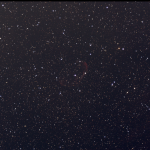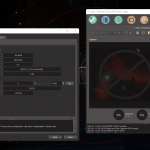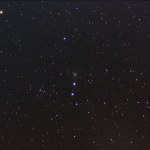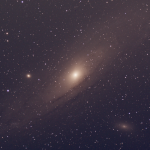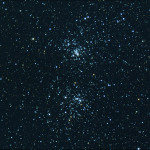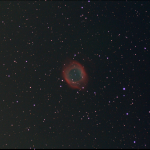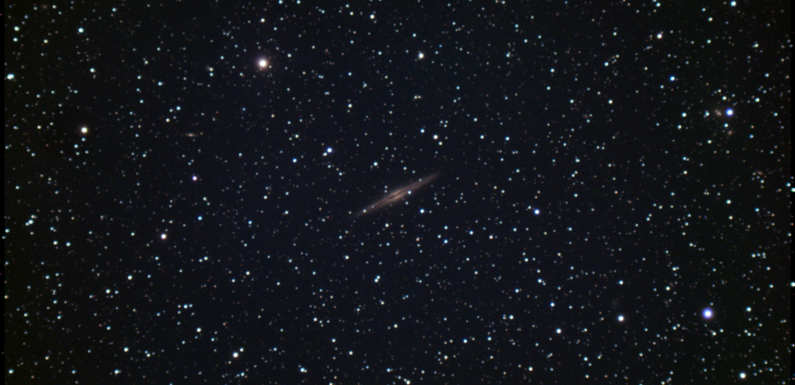
A cold and clear night. Temperatures in the low 40’s which is the coolest yet this fall. EAA is great cause my office was nice and toasty :). I had a plan to capture a few of the objects on the CloudyNights’ November 2023 EAA Observing Challenge list. I did get to observe one of the challenge objects, but the others will have to wait for later night.
I uncovered the scope in the late afternoon and cabled everything up. I shot a new set of 120 second darks (30 x 120 seconds), I still need to shoot some new flats but for now I am using an old one. Once it was dark enough I focused using the Ekos Auto Focus routine, the steps were set at 6454. Plate solving is calculated the focal length at 702mm, F/6.9, so right were it should be. Then I did a polar alignment using the Ekos Polar Alignment routine. My polar alignment was still pretty solid so I only ran it to the West side of the scope and it only need a slight adjustment.
I did not use a filter in my image train for this session. I am also trying out dithering on my guiding. I have the dithering enabled and it set to 2 after every frame. Not sure I will notice very much difference with EAA, but I am interested to see if it improves post processing activities.
The EAA images in this post were capture with my ZWO ASI294MC Pro cooled to -10 C through my SVBONY SV503 102ED Scope with a UA adjustable field flattener. The SV503 is focused using a ZWO EAF and the Ekos Focus Module. Guiding is accomplished with an Orion Starshoot Autoguider (OSSAG) attached to a SV106 60mm guide scope. All gear is mounted on a Sky Watcher EQ6-R Pro. The mount and cameras are remotely controlled with KStars/Ekos via an INDI Server running on a Libre SBC. The images were live stacked using SharpCap Pro. Images have been resized (80% of original) and/or cropped for file size but otherwise appear just as I observed them. I broadcasted this observing session on Night Skies Network.
NGC 457, the Owl Cluster, is an open cluster in the constellation of Cassiopeia. This is a SharpCap live stack of 15 x 120 second exposures at 121 gain, 8 offset, and bin 2×2.
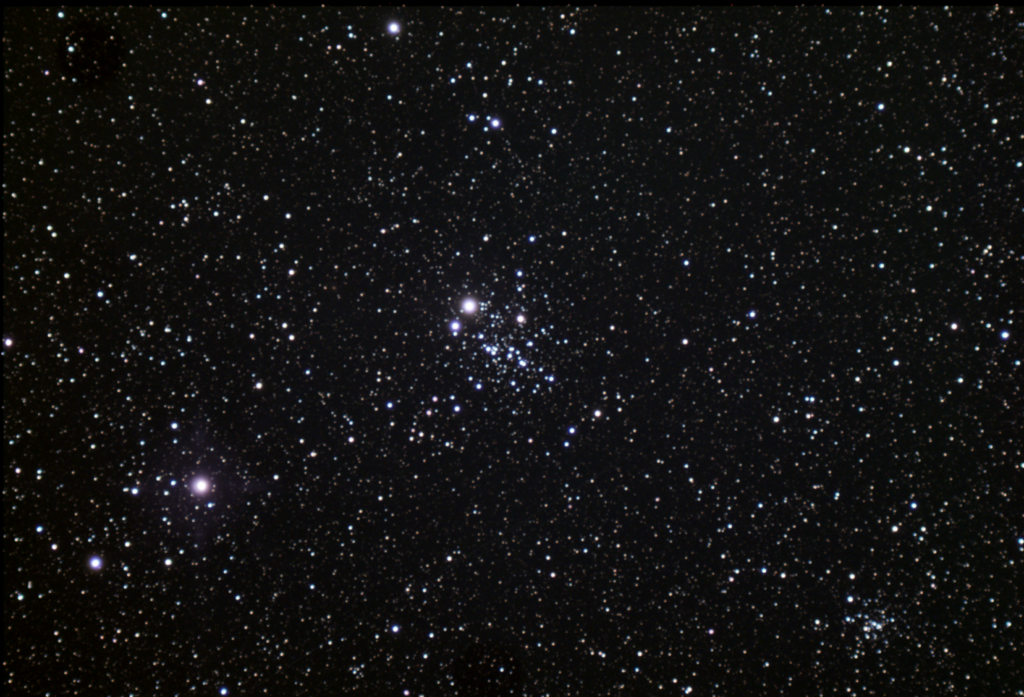
This is a pretty nice capture of the Owl. The Owl Cluster is, and probably always will be, one of my favorites. Nice way to start the night.
NGC 188 is an open cluster in the constellation of Cepheus. This is a SharpCap live stack of 15 x 20 second exposures at 121 gain, 8 offset, and bin 2×2. NGC 188 is an object on the CloudyNights’ November 2023 EAA Challenge list.
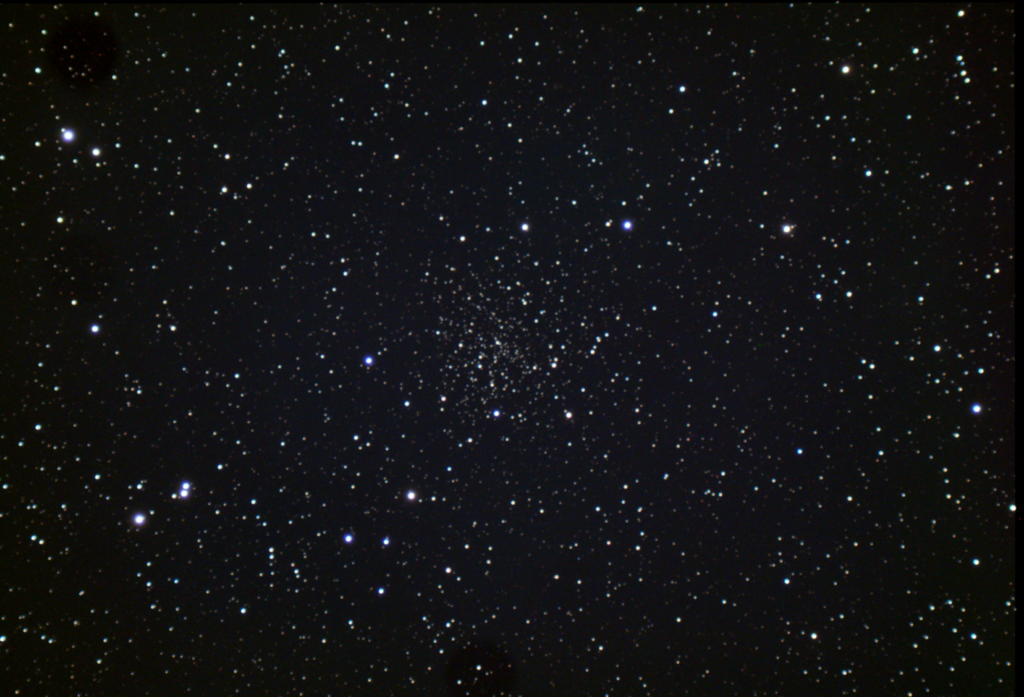
Nice interesting open cluster. NGC 188 is far above the plane of the Milky Way galaxy and at around 6.8 billion years old it is one of the most ancient known open clusters. It is around 5000 light years away and is above the Milky Way’s disc and further from the center of our galaxy than the Sun.
NGC 891 is an edge-on unbarred spiral galaxy about 30 million light-years away in the constellation Andromeda. This is a SharpCap live stack of 36 x 120 second exposures (72 minutes total) at 121 gain, 8 offset, and bin 2×2.
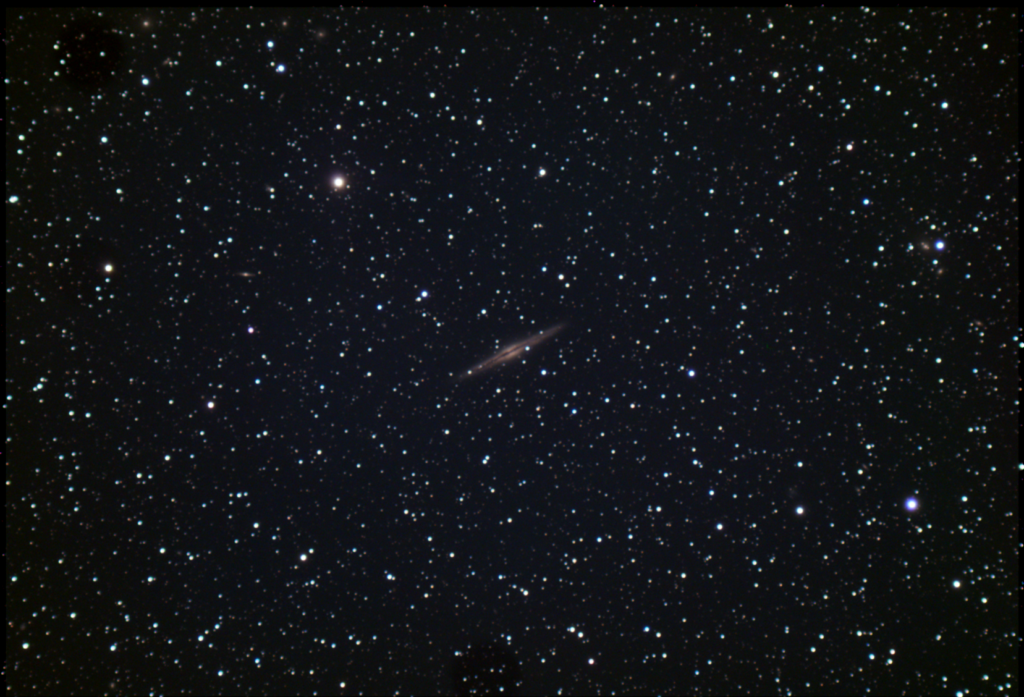
I had some trouble with the camera about 4 frames into this, but the 4 frames looked so great I was not ready to pack things up. I restarted the camera driver, but that did not fix things. I restarted the indiserver the camera started to cooperate again. So I collected 68 more 120 second exposures. NGC 891 is another one of my favorites. I captured a bit more on NGC 891 cause I plan to process it a bit in Siril. The image above the live stack and has not been processed other than with the SharpCap histogram controls. Glad I was able to get the camera back to capturing cause I really enjoyed this view.
I shutdown, packed up, and covered the scope around 11 PM. Nice night of observing. The forecast for the next few nights looks great, looking forward to the clear skies.
Don’t forget to fall your clocks back on Saturday night. Come Sunday we will be able to start observing at 4:30 PM 🙂


